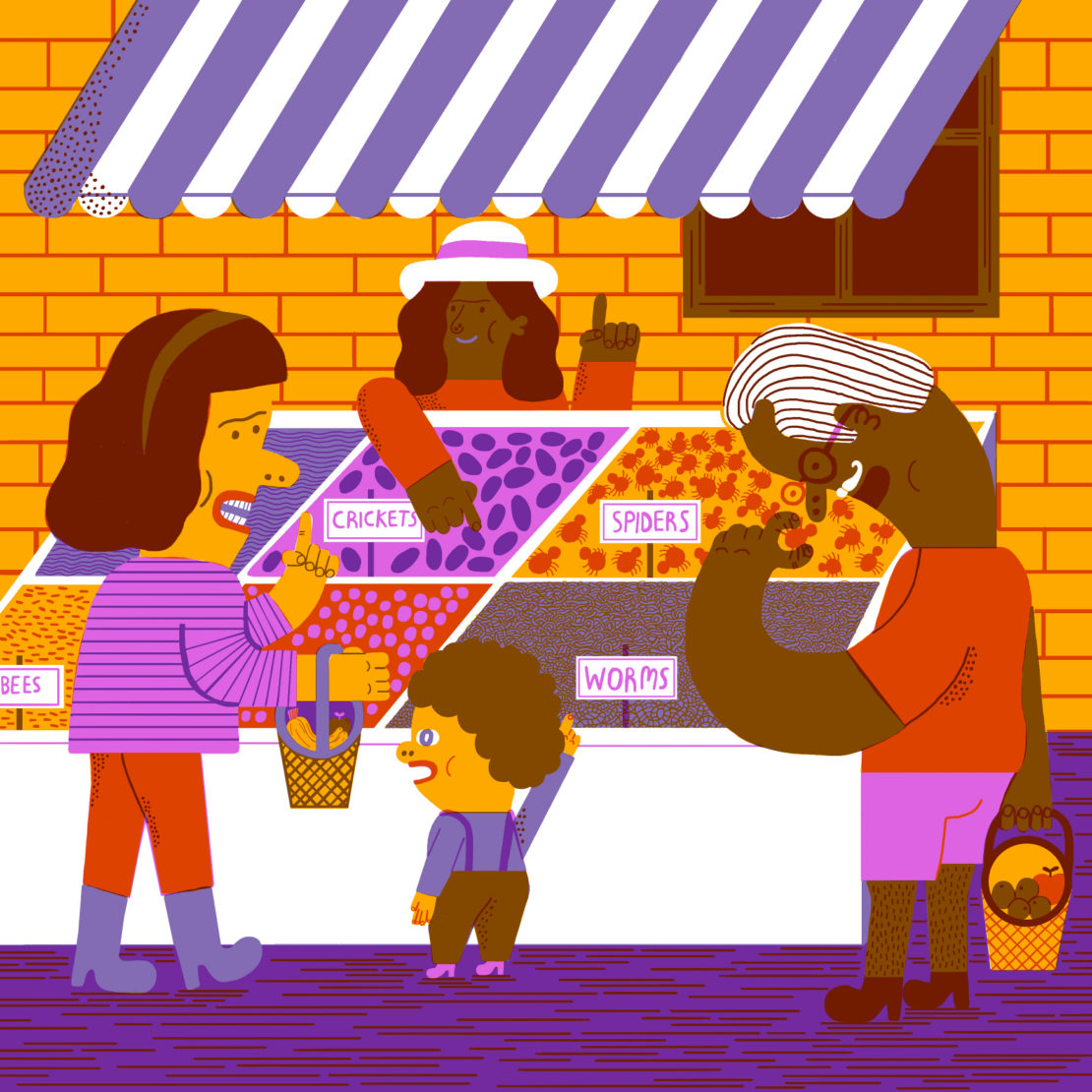
The future of delicious
In a research centre at the University of Oxford, a team of scientists are exploring ways to 'hack' our sense of taste. So far, they have figured out that the weight of cutlery can influence our enjoyment of food. They've also tricked people into sensing lemon on their tongue when, in fact, they're only tasting water.
Charles Michel, chef-in-residence at the Crossmodal Research Laboratory, has even deduced what makes the optimal burger. It should stand 7cm tall, contain nine specific layers and must be served in wrapping, rather than on a plate, with your favourite music playing in the background.
"Expectations play a much bigger part in our experiences than we think they do," says Michel, a Franco-Colombian chef who previously worked at a three-Michelin-star restaurant. "Most of the time we believe we're simply eating a certain thing when we're actually encountering a psychological construct of that thing. Eating is never just about the physical properties of food."
Relatively little is understood about how the brain combines our senses to form a flavour. What we do know is that sight and smell provide much of the input. Taste is considered the weakest of the senses – it can't distinguish between apples and onions by itself, for example – which leaves it open to manipulation by a variety of stimuli, from the ambience of the surrounding area to the orientation of a plate.
In one of Michel's experiments, he prepared three salads made from exactly the same ingredients. One was neatly arranged on the plate, one was loosely tossed together and one was artfully crafted to resemble Kandinsky's Painting #201. A taste test using 60 participants found that people not only preferred the Kandinsky dish; they were also willing to pay up to twice as much for it.

The idea of using multiple senses to influence consumer psychology seems to be gaining traction. One example Michel mentions is the Sensorium exhibition which ran recently at Tate Britain. There, in the corner of a darkened room, you could discover what a Francis Bacon painting might taste like. A set of chocolates shaped like miniature bowls, sitting on what looks like a bed of soil, had been specifically designed to accompany the artist's Figure in a Landscape.
After putting on a pair of headphones, you're instructed to take a bite of the chocolate and let it crumble in your mouth. The texture feels like coffee grounds. The taste wavers between charcoal, salt, tea and, yes, dark chocolate. The soundtrack, meanwhile, drifts between blasts of industrial machinery, children playing outdoors and an engine running idly. Taken separately, these additional stimuli would deliver little. Together, they offer an added depth of experience that immerses you in the painting's dark, mechanical quality.
This approach to harnessing flavour is inspiring some of the world's best chefs to challenge the way we think about food. The likes of Momofuku in New York and the Nordic Food Lab in Copenhagen are pulling together strands of physics, chemistry and neuroscience to answer the same conundrum: "What could be delicious?"
Charles Michel explains that not so long ago, efforts to answer that question rarely extended beyond the cook's palate. But the rise of nouvelle cuisine-inspired chefs to step out of the kitchen and consider the dining experience in new ways. "That freed up our imagination to consider the role of perception and expectation, rather than just the technical endeavour of creating food," he says.
"High-end gastronomy is like the Formula One of food," says Michel. "They engineer efficient driving technology that, years later, you can find in your car. The same goes for cooking. Right now, expensive modernist restaurants are trying to hack our taste buds, making things more delicious than they might otherwise be. The work they do may be the kind of food you find in supermarkets in the future."
Framing this picture, however, is a sense of urgency. By 2050, the world's population will exceed nine billion. The spread of prosperity in China and India means demand for meat is rising at an unsustainable rate. A global food crisis is looming and something has to give. Given how much agriculture contributes to environmental problems, from climate change to loss of biodiversity, simply ramping up production is not an option. We've already cleared landmass roughly the size of Africa and South America just to grow crops and raise livestock.
This is where culinary innovation comes in. Influential chefs such as José Andrés are campaigning for the food industry to find creative ways of combining technology with taste and affordability. The search is on for mass-market solutions that can turn plentiful ingredients we don't normally associate with eating – from using algae to experimenting with microbes to produce complex flavours – into palatable products that can help sustain a growing population.
Lab-grown meat and 3D food printing have been championed as promising long-term enterprises; but nutritious, market-ready solutions are already materialising. Beyond Meat, for instance, is a Californian company rebuilding plant protein so that it's indistinguishable from but much healthier and more sustainable than meat in terms of taste and texture; while Hampton Creek Foods, also in California, have developed a plant-based egg substitute that can make cookies, cakes and mayonnaise with no noticeable difference in taste. Both companies’ products are already available in US shops.
One area that could provide the greatest environmental and economical impact lies in the most sustainable protein source on earth: insects. Humans have always eaten bugs (and over two billion still do: crickets are popular in Thailand and Cambodia, for instance, while centipedes and scorpions are eaten in China); but using gastrophysics to make them more appealing may offer a route to global food security.
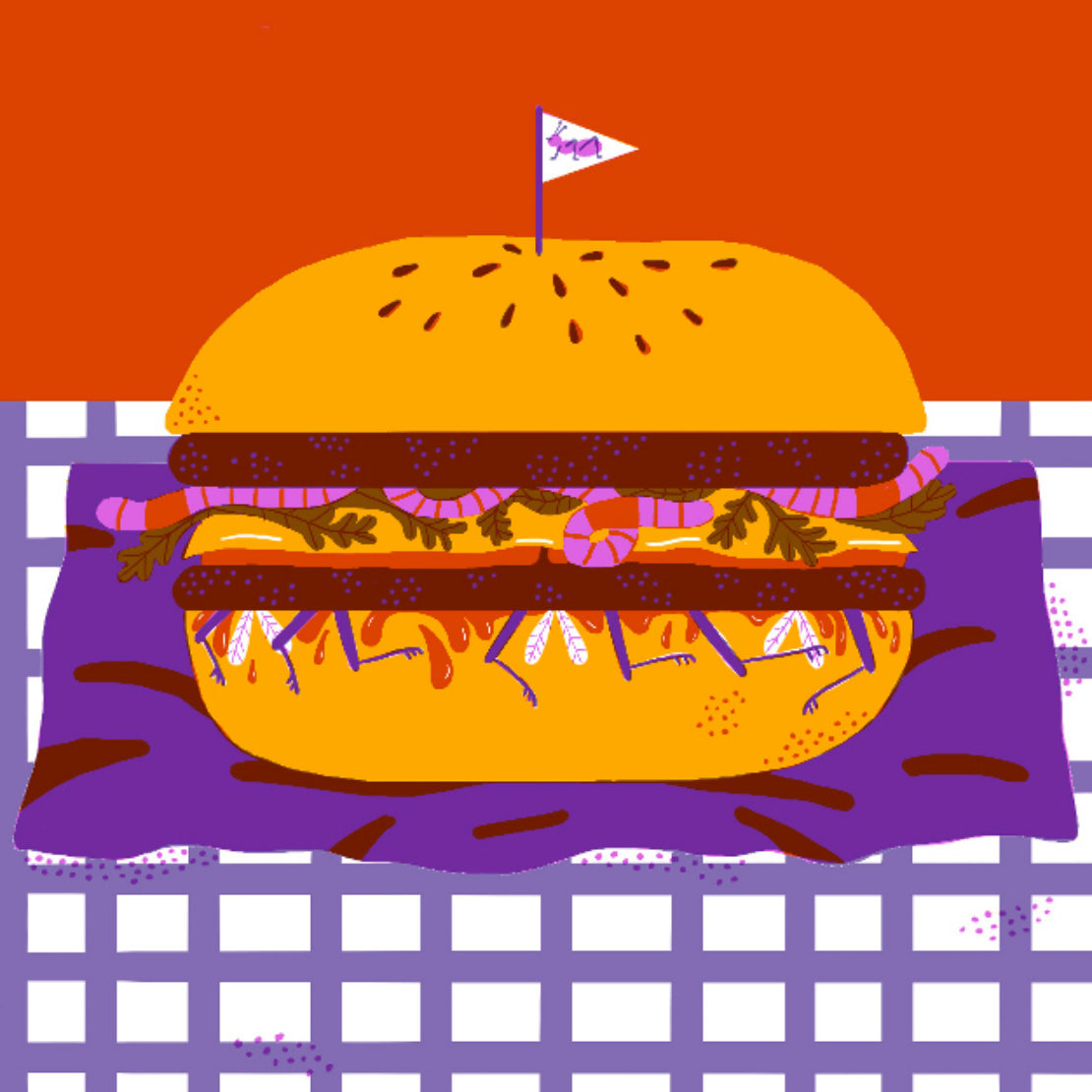
Insects aren't all that different from shrimp, according to Professor Arnold van Huis, one of the world's leading experts in entomology, the scientific study of insects. Speaking from his office in the Netherlands, where he sits before a bookcase crammed with titles about bugs, van Huis seems like an inexhaustible source of insect information.
There are, moreover, 1,900 edible species in existence, outnumbering humans by 1.4 billion per person. They're perfectly safe to eat when reared in hygienic conditions; and besides, he says, only 0.1 per cent of insects are harmful anyway. Bugs require relatively little space to farm and their ecological footprint is minimal. It takes 2.1kg of feed to produce 1kg of edible crickets compared to the 25kg of feed and 40,000 litres of fresh water needed for just 1kg of beef.
The only blank spot in van Huis' knowledge is whether insects are likely become the food of the future. "The interest is growing exponentially but I am not quite sure whether it will take off in Europe," he says solemnly. "Whether insects will be considered a main food type, I don't know."
The obvious problem, counters Charles Michel of the Crossmodal Research Laboratory, is that most westerners find the idea disgusting. Insects have a serious image problem. This stems from learned associations dating back to when we lived in less sterilised environments. The kind of threat insects posed to us then no longer exists. There is often a psychological barrier to eating 'creepy crawlies', too.
Currently, Michel and his colleagues are researching the best cognitive arguments to overcome that disgust, be it for health, environmental or social reasons; and the influence these reasons may have on viewing edible bugs as something more than just a novelty.
"The key issue here is that cooks have more responsibility than they may realise," he says. "One of our collaborators published a paper in [the journal] Nature saying, "If you want to convince people on a mass scale to eat insects, then get them to do it out of enjoyment rather than out of trying to help the environment. It has to be about pleasure, so that falls to the chef to create something delicious."
When Michel used insects to create a dish of his own, he presented it to the experimental kitchen at Heston Blumenthal's The Fat Duck without telling them what it was. The staff seemed unfazed: it just tasted like a nutty vanilla ice cream. No big deal. "But when I told them it was made from bee larvae," says Michel, "they were quite surprised."

Michel's father is a beekeeper, so he's familiar with the ecological issues surrounding bees. But the chef believes some creative approaches – such as cultivating a surplus of male honeybees (whose primary purpose is procreation) and rearing them in artificial hives – could help neutralise the threat they're facing.
"I don't see cows, pigs or chickens going extinct any time soon," he says. "Why? Because we've made a business out of them. If we manage to make a bigger business out of bees, there's going to be more money for beekeepers. More beekeepers, more bees. It's very simple mathematics. Right now, honey is making money and pollen is not [generating] enough. But bees might be the first thing that break the barrier in people's minds when it comes to eating insects."
We already have a positive association with bees, Michel continues, and even if they end up becoming a high-end delicacy, that will still help to challenge the cultural taboo around eating insects. "If you found bee ice cream delicious, would you be open to trying maggots? How about fly larvae? That's a good example because it has the potential to be sold in supermarkets at a very low cost. If people try bees first they will see that it's essentially the same thing. And if it sells in supermarkets, then they'll realise it must be safe. I really think this can happen. It's just a matter of time."
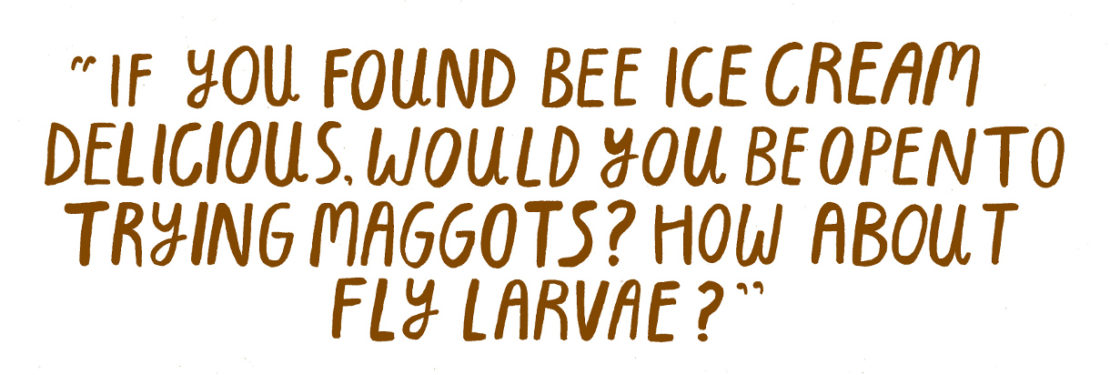
The moment Laura D'Asaro first bit into a fried caterpillar, she was not repulsed. In fact, it tasted surprisingly like lobster. At the time, D'Asaro had been learning Swahili in Tanzania and considered the experience a one-off taste experiment.
Two years later, in 2013, the Food and Agriculture Organization (FAO) of the United Nations issued a landmark report – principally authored by entomology expert Professor Arnold van Huis – highlighting how insects could solve an impending food crisis. Reading it reminded D'Asaro of her bug-eating experience and inspired her to form a start-up, along with her Harvard classmates Meryl Natow and Rose Wang, called Six Foods. Its aim was simple: get Americans eating insects.
"People were absolutely freaked out by what we were trying to do," says D'Asaro. "Initially, when we were ordering whole insects to our dorm room and cooking them up, one of my friends fell out of his chair backwards at the sight of it. So it was difficult at first. We asked ourselves, 'How do you get people excited about insects?' It came down to a question of form."
The trio settled on mealworm tacos as the perfect platform. Shortly before pitching to a panel at the Harvard Innovation Lab, they accidentally stored 50 of the tacos in a communal fridge where, not long after, all but seven were eaten. People working in the lab had confused them for real beef tacos and decided to help themselves. "We were excited!" exclaims D'Asaro, still bubbling at the thought of it. "It was exactly the kind of response we had been hoping for."
In the Harvard competition, however, the tacos did not convince so easily. "The judges, knowing they were made of mealworm, were not having it. That disappointed us because we felt like we'd found the answer in terms of getting the taste right. Clearly, people weren't ready."
Starting over, D'Asaro and her partners opted for a form of insect protein that could be easily assimilated into mainstream foods: cricket flour. They collaborated with a chef to devise a line of tortilla chips called Chirps that are gluten-free, contain 40 per cent less fat than regular chips and pack more protein per serving than an egg. A Kickstarter campaign to crowd-source funding raised over $70,000: more than twice their goal.
It's not about sneaking insects into what we eat, D'Asaro explains. Instead it's about finding ways to ease people into appreciating the nutritional and environmental benefits: a sort of education through eating. The only real difference between trying ground insects and whole ones, D'Asaro says, is a frame of mind.
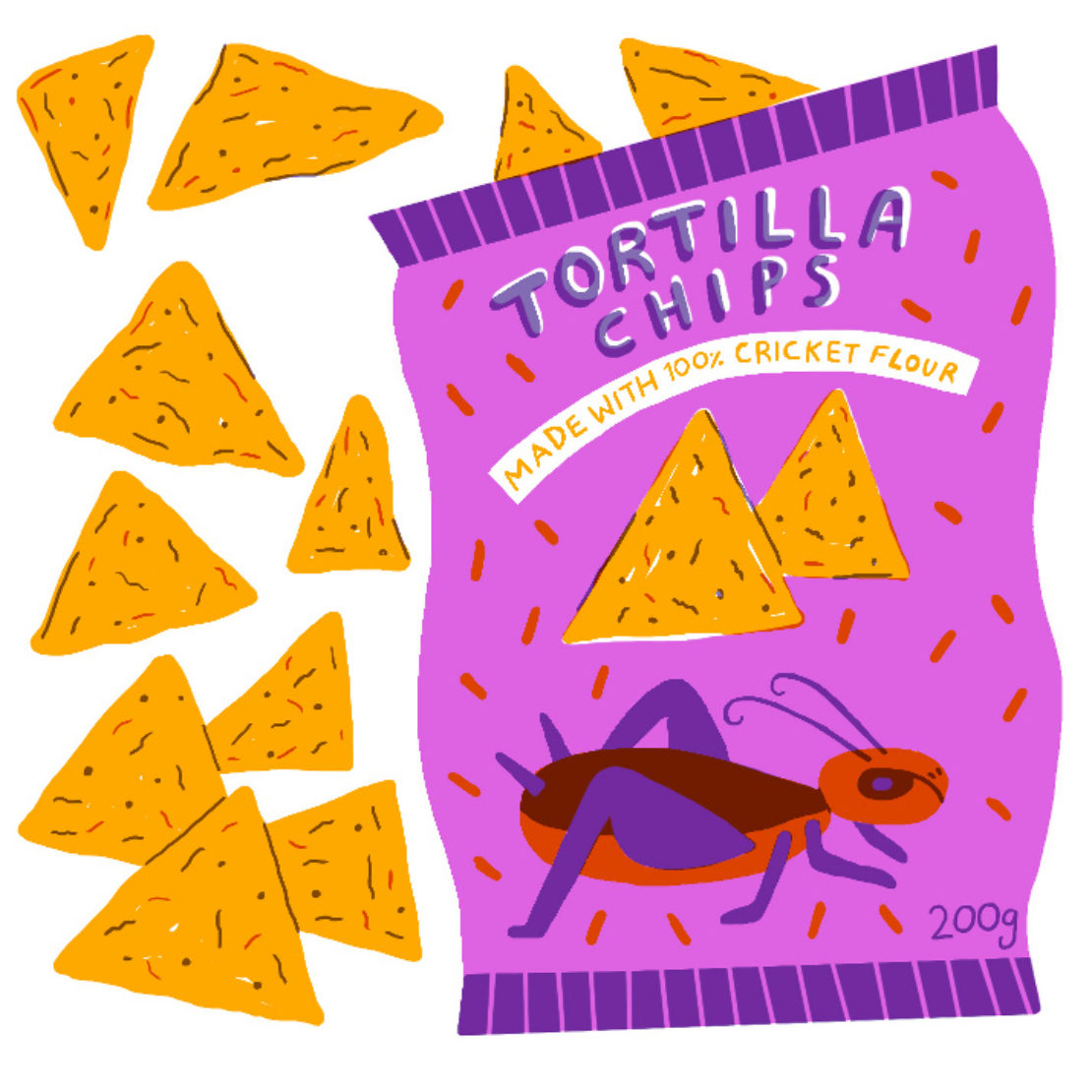
"Just having bugs listed in the ingredients is a stepping stone," she says. "Our big vision is that you will eventually be able go to a store or restaurant and, alongside beefburgers or chicken burgers, there'll be what might be called entoburgers, made from insects. That would be a pretty big step, as we found out with our mealworm tacos, so it's about taking little steps to get there. When we started, people thought we were crazy. This year crickets are one of the top food trends. There's a difference even just in people's awareness levels at stores when we give out samples. It feels like a cultural change is happening."
If food is becoming a broader cultural conversation, then it seems to be driven by the open-mindedness of a younger generation. According to a new report by J Walter Thompson's Innovation Group, 74 per cent of millennials in the US and the UK are willing to change their diets in order to have less impact on the planet. Almost a quarter of Americans in that age group would eat protein from unusual sources, including insects, compared to just 5 per cent of those aged 50 and over.
A few factors are responsible, says Lucie Greene, worldwide director of the Innovation Group. Sure, there appears to a more holistic view of consumption, informed by a heightened awareness of the politics behind food and nutrition. But even more significant is the rise of what Greene refers to as 'experience culture'.
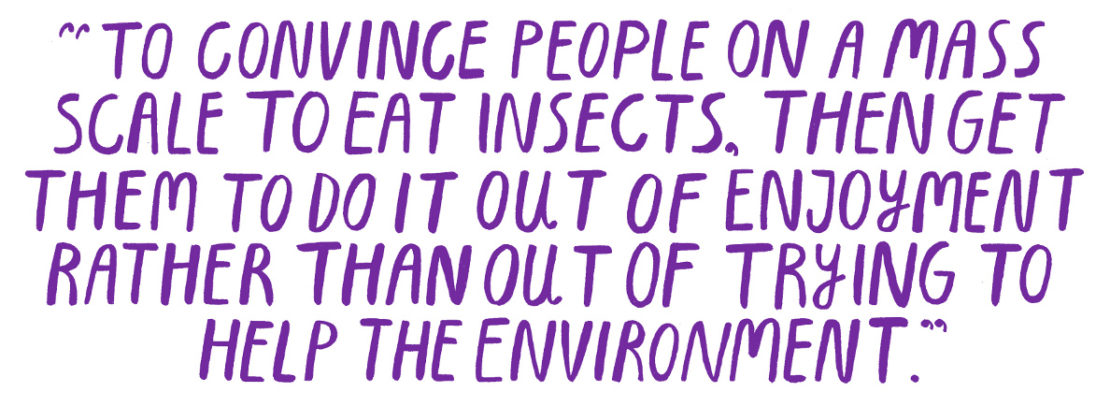
"The impulse to share on social media and project this curated, aspirational identity has become a big part of enjoying food," says Greene. "It's accelerated the metabolism of food trends whereby things that seemed marginal, exotic or even unpalatable are suddenly considered cool at a much quicker rate. So many people now see themselves as adventurous foodies that it's having massive implications for brands, especially mass-market ones, who are forced to up their game."
Whether brands will be enticed by a bug bandwagon remains unclear, however. The future of edible insect farming – projected to be worth over £230m in the next five years – is clouded by uncertainty. Existing US and European health standards do not adequately regulate insects as a food source. The resulting grey area means the fledgling sector has been operating on an ad hoc basis, which can hinder production plans and deter long-term investment.
The European Council has been reviewing regulations with the aim of introducing amended legislation by the end of the year. It's anticipated that the use of both whole and partial insects will effectively be treated as 'novel foods': items that do not have a significant history of human consumption in the EU before May 1997, when the Novel Foods Regulation was introduced. Clearly, that framework exists to protect consumer health. But the associated costs and administrative burdens of meeting its thorough guidelines may prove prohibitive to small-scale farmers.
"Legislation is always conservative and, in this case, it's hampering the innovation," says Professor Arnold van Huis.
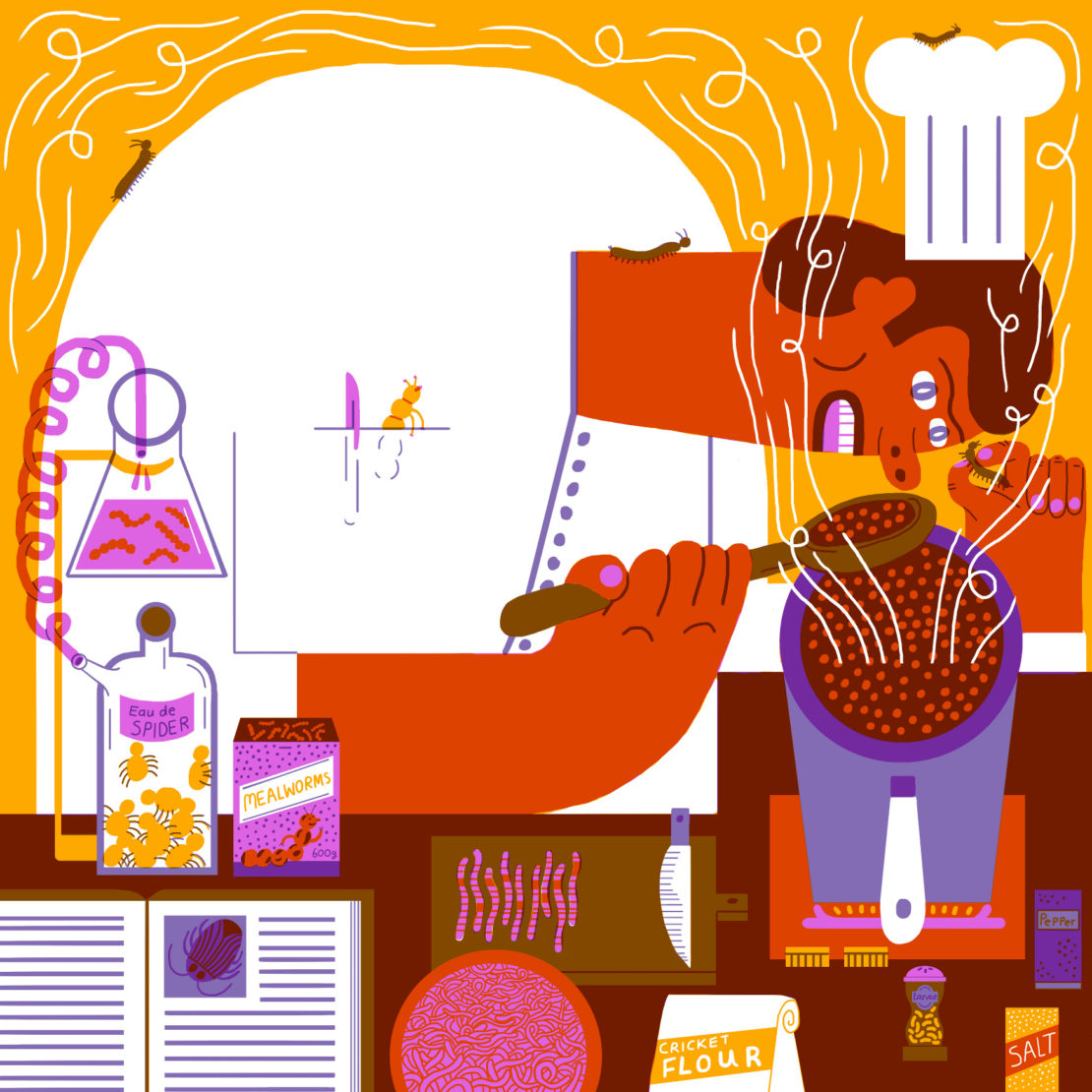
Perhaps a more reliable way of gauging the future is in understanding how our eating habits have evolved. Just a matter of decades ago, sushi was considered unappealing to Western tastes, olive oil was something you bought in a pharmacy and kiwis were unknown outside China. But what gives a food trend staying power is its ability to stick in people's awareness.
"We're hardwired to like certain foods but so much of it has to do with availability and cultural knowledge," says Dr Rachel E Black. She's a culinary anthropologist based in Connecticut and president of the Society for the Anthropology of Food and Nutrition. "If you look at the introduction of chocolate or even sugar to Europe, there was a trickle-down effect where it was initially available to a limited few, usually of a higher social class. Then came aspirational consumption through a desire to be associated with that class or level of access."
Black believes that today's technological world has altered that dynamic. People are discovering things for themselves and, as soon as that interest reaches niche-level, the food industry is primed to grab hold of it. So the question we're left with is whether the same interconnectedness that has revolutionised the way we eat could also solve a food crisis.
"I think if we're being really optimistic, yes," says Black. "But even in the current state, the distribution of the world's food supply is unequal. The challenge we're facing is difficult because, as with other crises, it's ultimately political. Look at the current refugee crisis: we could resolve that but we're not. So how is our response to a food crisis going to be any different or any simpler?"
In terms of forecasts, it probably won't be. Humanity's anxiety over food security is long-standing. A 2006 book, Meals to Come: A History of the Future of Food by Warren Belasco, chronicles a long line of wake-up calls, cornucopian visions and egalitarian arguments dating back centuries. Black says the upside of these predictions, even when they're dystopian, is that they engage us in thinking about what's happening to our food system.
"What's exciting is that people are recognising food as being important in their lives and the lives of others," she says. "So much of how we communicate today seems to be alienating in many ways. We're rarely together in the same space. That's why I think people just aren't ready to let go of the social and cultural aspects to eating. They see food as an outlet for doing something meaningful. Maybe that's not a very forward-looking hope or prediction but it brings us back to basics, because food is a basic. It's something that connects us all."